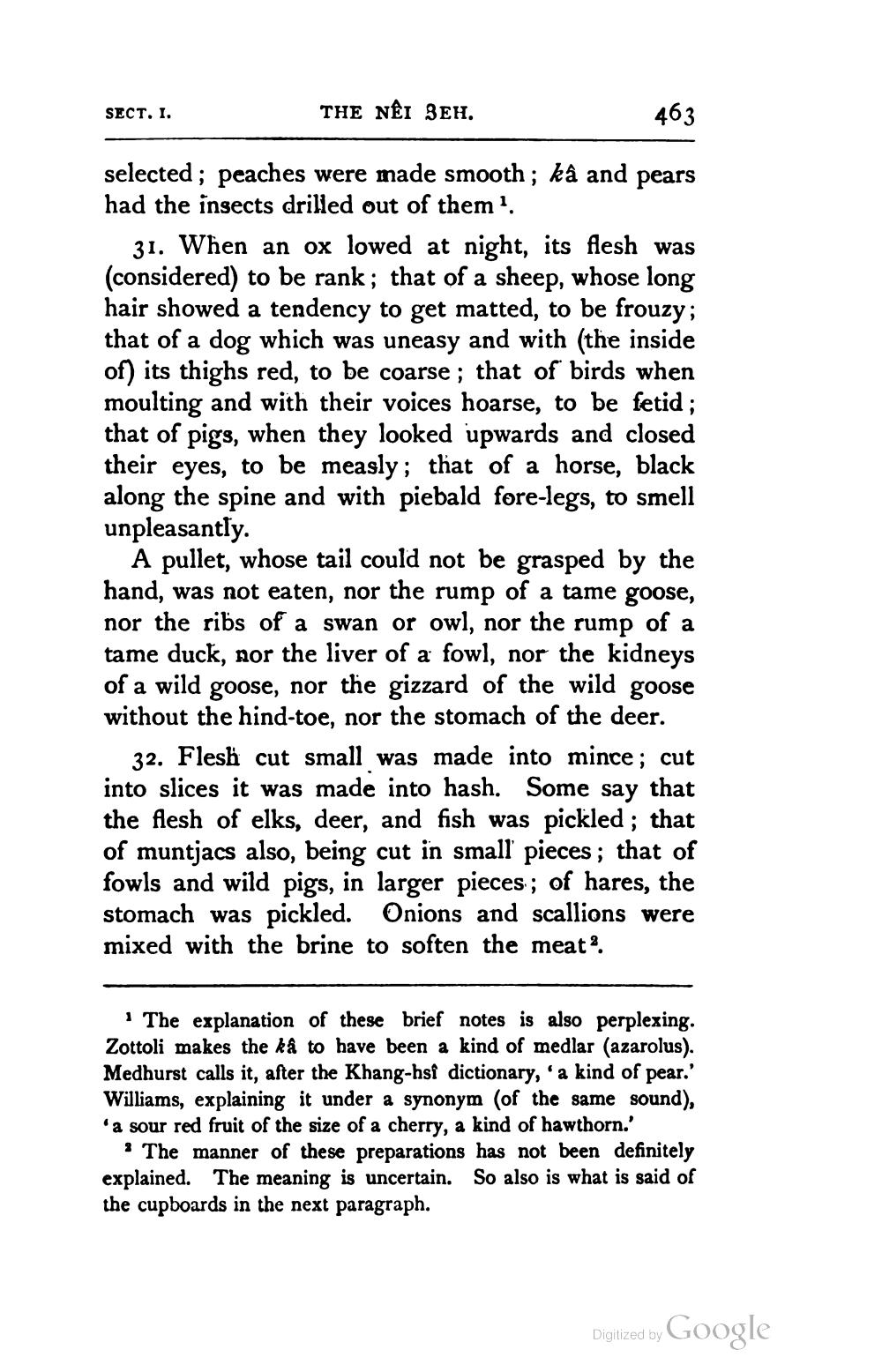________________
SECT. I.
THE NÊI BEH.
463
selected; peaches were made smooth; kâ and pears had the insects drilled out of them?
31. When an ox lowed at night, its flesh was (considered) to be rank; that of a sheep, whose long hair showed a tendency to get matted, to be frouzy; that of a dog which was uneasy and with the inside of) its thighs red, to be coarse; that of birds when moulting and with their voices hoarse, to be fetid; that of pigs, when they looked upwards and closed their eyes, to be measly; that of a horse, black along the spine and with piebald fore-legs, to smell unpleasantly.
A pullet, whose tail could not be grasped by the hand, was not eaten, nor the rump of a tame goose, nor the ribs of a swan or owl, nor the rump of a tame duck, nor the liver of a fowl, nor the kidneys of a wild goose, nor the gizzard of the wild goose without the hind-toe, nor the stomach of the deer.
32. Flesh cut small was made into mince; cut into slices it was made into hash. Some say that the flesh of elks, deer, and fish was pickled ; that of muntjacs also, being cut in small pieces; that of fowls and wild pigs, in larger pieces; of hares, the stomach was pickled. Onions and scallions were mixed with the brine to soften the meats.
· The explanation of these brief notes is also perplexing. Zottoli makes the kå to have been a kind of medlar (azarolus). Medhurst calls it, after the Khang-hsî dictionary, 'a kind of pear.' Williams, explaining it under a synonym (of the same sound), 'a sour red fruit of the size of a cherry, a kind of hawthorn.
? The manner of these preparations has not been definitely explained. The meaning is uncertain. So also is what is said of the cupboards in the next paragraph.
Digitized by Google




